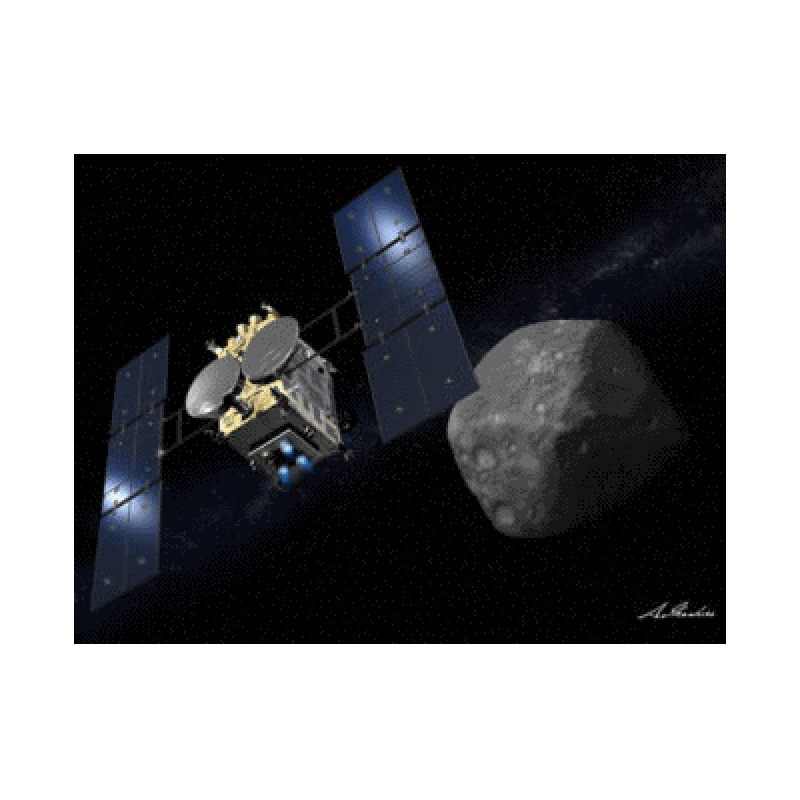Boulders and a Crater Dot Asteroid Ryugu in This Spectacular Up-Close View


A Japanese space probe orbiting an asteroid called Ryugu just took the closest photo yet of the diamond-shaped space rock.
The Hayabusa2 spacecraft launched to the asteroid Ryugu in December 2014 and arrived on June 27 of this year. The probe will study Ryugu up close for 18 months before returning to Earth with a sample of the asteroid in 2020. After Hayabusa2 entered into orbit around Ryugu, it began hovering at an average distance of about 12 miles (20 kilometers) away from the asteroid's surface, Japan Aerospace Exploration Agency (JAXA) officials said in a statement .

(This photo is clickable for a bigger version)
Japan's Hayabusa2 spacecraft captured this view of the asteroid Ryugu
from approximately 4 miles (6 kilometers) away on July 20, 2018, at 3 a.m. EDT (0700 GMT).
Credit: JAXA
Last week, mission controllers began to lower the spacecraft's altitude to observe the asteroid's surface. Hayabusa2 captured this view of Ryugu when it was about 4 miles (6 km) away on July 20. [ Japan's Hayabusa2 Asteroid Ryugu Sample-Return Mission in Pictures ]
In the center of the image, you can see Ryugu's largest crater. "You can also see that the surface of Ryugu is covered with a large number of boulders," JAXA officials said. "This picture will provide important information as we choose the landing site."
Hayabusa2 spent only one day hovering so close to Ryugu. "After conducting observations of Ryugu during this time, Hayabusa2 began to ascend on July 21," after which it returned to its "home position" at an altitude of 12 miles (20 km), JAXA officials said.
During its time at Ryugu, Hayabusa2 will scoop up multiple samples from the asteroid and blow an artificial crater into its surface to study materials below the asteroid's surface. It will also deploy a lander called MASCOT and three small MINERVA-II rovers, which are based on similar rovers deployed by JAXA's first Hayabusa mission to asteroid Itokawa.



From a distance of six km (less than four miles).
Wow.....
Very cool and interesting